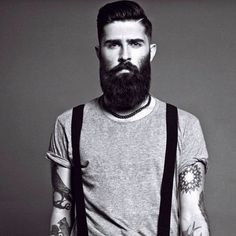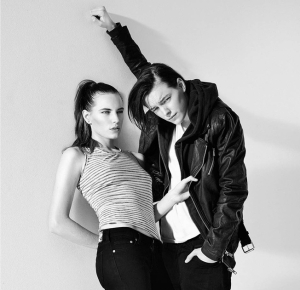One of my favourite pass-times nowadays is to play with my boyfriend’s beard; usually when contemplating some kind of Camus-like existential crisis – it helps me feel at one with my primitive self. As someone who was born anatomically female, I find it difficult to grow a beard of my own to aid me with my ponderings of the universe, unless you count a teasing shadow of a Frida Khalo-esque moustache, which, frankly, fails to live up to the job. Beards are everywhere now. In the street, on Bill the hobo’s face as well as Danny’s, the budding graphic design student. The ‘lumbersexual’ trend has traversed boundaries of masculinity and resulted in a fashion phenomenon for men of all ages and backgrounds. It is the done thing.
The bearded one can woo their lady or guy with this beacon of masculinity, and the bigger the better. If it looks like an alpha badger has made a home on your face then you have succeeded. But does this hyper-masculine trend fail to understand the complexities of our relationship with our gender and how it is perceived? Is this trend damaging for boys and men? Or is it in fact a liberating sign of progression when it comes to breaking the boundaries of the clean-shaven black-tied ken doll?
The ‘lumbersexual’ is a heavily bearded male, usually white and heterosexual. He’s a plaid wearing MacBook owner who likes craft beer and artisan coffee. He looks like he should be in a forest covered in sweat and sniffing a pine tree. The reality is the only thing that makes him sweat is running out of patchouli beard oil when he only has the hemp stuff left. This hairy primal look brings men back to their most natural selves, save for a bit of sculpting here and there. It can provide an alternative existence; acting as a rebellion against the suited-up corporate industry (although it can be argued that it is a fashion trend and therefore complying with the system – plus Sikh men have been bearded heroes for years and haven’t got any credit). On the other hand, some men like to grow a beard because they think it suits them and they can’t be arsed shaving and so for them it is fashion-convenient. This is all very well. But as the beard is the main attribute of the ‘lumbersexual’, men who do not have the ability to grow a beard may feel like they are not ‘real’ men. In the same way as lean fashion models are told by bitter women in the media they are not ‘real’ women because they do not have ‘curves’, the modern man could be emasculated by society for his lack of facial hair. This can be destructive for men and boys as if they do not reflect the image of the ‘ideal’ man they will thus be less attractive to a potential mate. Therefore, the hyper-masculine age has forced us all to reflect upon what it means to be a ‘man’ and what it means to be a ‘woman’ and if we are comfortable with the expectations assigned to our gender and why it is becoming important that we should question them.
Despite the fact that it does seem to be apparent that our gender roles are (even though they can change and evolve) dictated mainly by the media and the fashion industry, it is reassuring that it is becoming more and more commonly accepted that our gender may not correlate with our sex. The courage of transgender people has helped us shift our perspective on the ways that we are conditioned to think about the relationship between our gender and our sex.There are many public figures who are transgender and contributing to this societal change of perspective such as Laverne Cox, an LGBT advocate most known for her role in hit series ‘Orange is the New Black’. There are countless successful transgender people who are becoming role models for young people everywhere. Recently it has become fashionable for menswear to be worn by women, demonstrated by lines in high street stores such as Urban Outfitters. Models such as Ruby Rose and Erika Linder, the first female to be on the men’s board in 2011 and model for both men and women’s fashion, are also pioneers of this movement, this crucial shift in perspective.
These women continually push the boundaries of gender perception and celebrate androgyny. Blurring the lines between gender roles allows us to make a decision as to whether our gender should be a main factor in determining our identity.
So next time someone tells you you’re not ‘manly’ enough to grow a beard, or criticises you for studying electrical engineering because you’re a woman and it’s a ‘man’s trade’, or ridicules you because they can not put you into a box or mould you into the shape of their backward ‘normality’, tell them that for you the box doesn’t exist, and it never has. That you are you and that is beautiful, and that is enough. And if that doesn’t work then a simple ‘go fuck yourself’ also does the trick.


Entertaining and thought-provoking as always, I have noticed that transgender fashion is becoming more and more popular, and I don’t see why not! Some clothes that girls wear can look great on men and vise versa, and as for beards? Aye, they’re a bit of all right! It all depends from person to person though. Individualism is a wonderful thing, and no one should try and supress others identity, simple as that! x
LikeLiked by 1 person